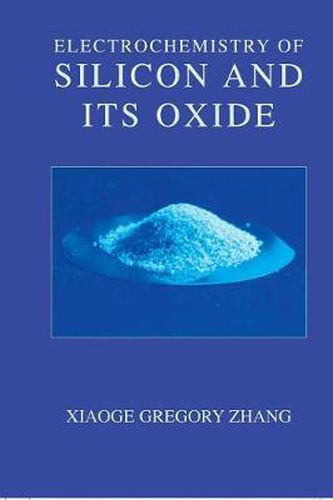Readings Newsletter
Become a Readings Member to make your shopping experience even easier.
Sign in or sign up for free!
You’re not far away from qualifying for FREE standard shipping within Australia
You’ve qualified for FREE standard shipping within Australia
The cart is loading…






This title is printed to order. This book may have been self-published. If so, we cannot guarantee the quality of the content. In the main most books will have gone through the editing process however some may not. We therefore suggest that you be aware of this before ordering this book. If in doubt check either the author or publisher’s details as we are unable to accept any returns unless they are faulty. Please contact us if you have any questions.
It may be argued that silicon, carbon, hydrogen, oxygen, and iron are among the most important elements on our planet, because of their involvement in geological, biol- ical, and technological processes and phenomena. All of these elements have been studied exhaustively, and voluminous material is available on their properties. Included in this material are numerous accounts of their electrochemical properties, ranging from reviews to extensive monographs to encyclopedic discourses. This is certainly true for C, H, O, and Fe, but it is true to a much lesser extent for Si, except for the specific topic of semiconductor electrochemistry. Indeed, given the importance of the elect- chemical processing of silicon and the use of silicon in electrochemical devices (e. g. , sensors and photoelectrochemical cells), the lack of a comprehensive account of the electrochemistry of silicon in aqueous solution at the fundamental level is surprising and somewhat troubling. It is troubling in the sense that the non-photoelectrochemistry of silicon seems to have fallen through the cracks, with the result that some of the electrochemical properties of this element are not as well known as might be warranted by its importance in a modern technological society. Dr. Zhang’s book, Electrochemical Properties of Silicon and Its Oxide, will go a long way toward addressing this shortcoming. As with his earlier book on the elect- chemistry of zinc, the present book provides a comprehensive account of the elect- chemistry of silicon in aqueous solution.
$9.00 standard shipping within Australia
FREE standard shipping within Australia for orders over $100.00
Express & International shipping calculated at checkout
This title is printed to order. This book may have been self-published. If so, we cannot guarantee the quality of the content. In the main most books will have gone through the editing process however some may not. We therefore suggest that you be aware of this before ordering this book. If in doubt check either the author or publisher’s details as we are unable to accept any returns unless they are faulty. Please contact us if you have any questions.
It may be argued that silicon, carbon, hydrogen, oxygen, and iron are among the most important elements on our planet, because of their involvement in geological, biol- ical, and technological processes and phenomena. All of these elements have been studied exhaustively, and voluminous material is available on their properties. Included in this material are numerous accounts of their electrochemical properties, ranging from reviews to extensive monographs to encyclopedic discourses. This is certainly true for C, H, O, and Fe, but it is true to a much lesser extent for Si, except for the specific topic of semiconductor electrochemistry. Indeed, given the importance of the elect- chemical processing of silicon and the use of silicon in electrochemical devices (e. g. , sensors and photoelectrochemical cells), the lack of a comprehensive account of the electrochemistry of silicon in aqueous solution at the fundamental level is surprising and somewhat troubling. It is troubling in the sense that the non-photoelectrochemistry of silicon seems to have fallen through the cracks, with the result that some of the electrochemical properties of this element are not as well known as might be warranted by its importance in a modern technological society. Dr. Zhang’s book, Electrochemical Properties of Silicon and Its Oxide, will go a long way toward addressing this shortcoming. As with his earlier book on the elect- chemistry of zinc, the present book provides a comprehensive account of the elect- chemistry of silicon in aqueous solution.